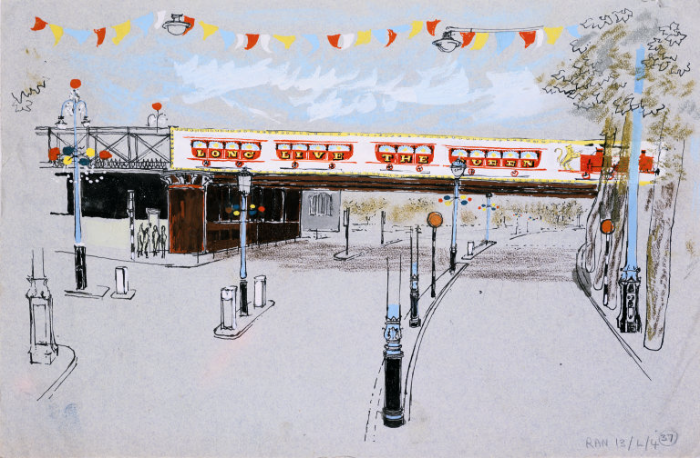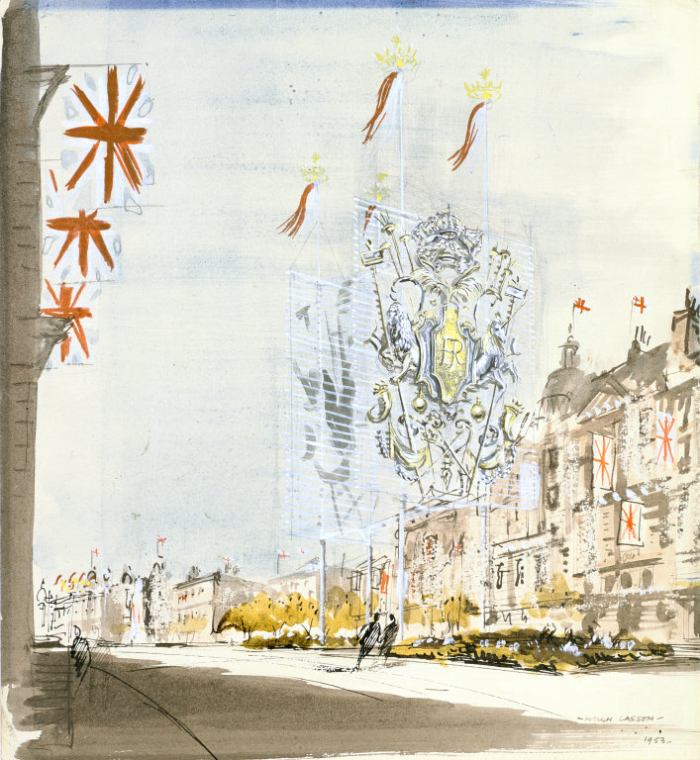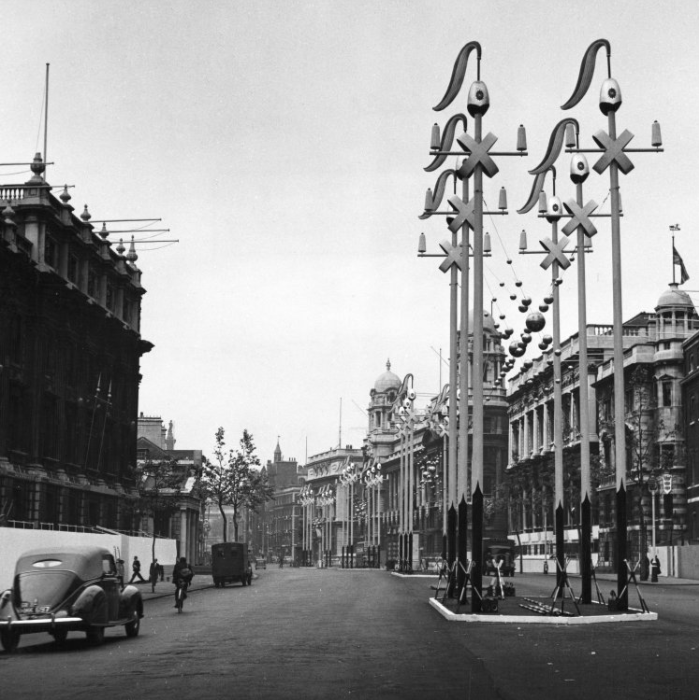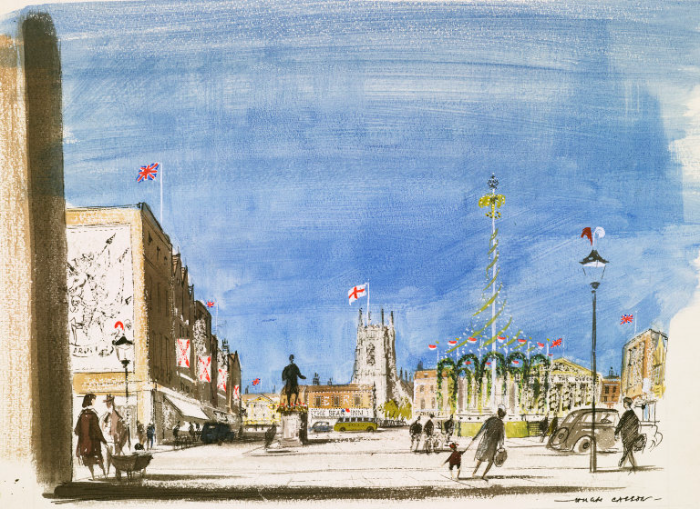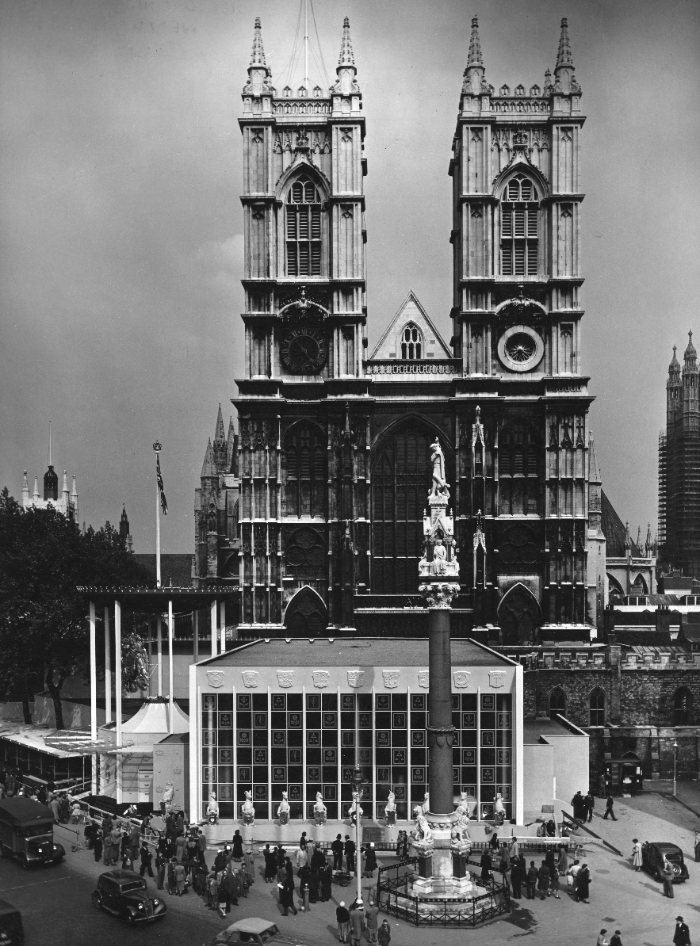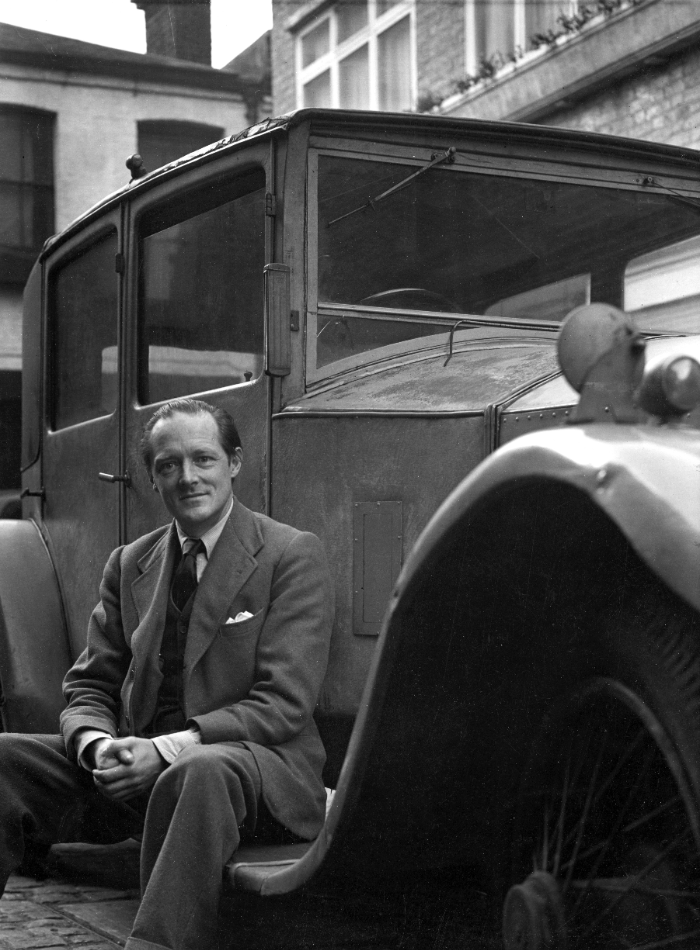Sir Hugh Casson and the coronation
In 1952, newly knighted British architect Sir Hugh Casson scored what would turn out to be a once in a generation opportunity: the job of Consultant Architect for street decorations in Westminster to mark the coronation of Queen Elizabeth II. The Queen had ascended the throne on the death of King George VI on 6 February 1952, and her coronation was set for June 1953.
The appointment was probably not a surprising one. Casson was fresh from the success of the 1951 Festival of Britain where, as Director of Architecture, he had coordinated the overall site plan for the South Bank exhibition, with its many architect and artist-designed pavilions and structures. He went on to develop a strong working relationship with the Royal Family, reportedly teaching Prince Charles watercolour painting. His architectural commissions later included cabins on the royal yacht, Britannia, and suites at Buckingham Palace and Windsor Castle.
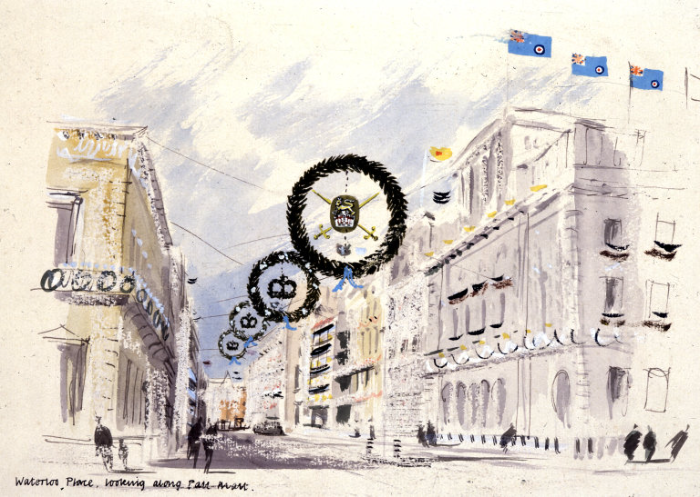
Original drawings for the coronation decorations can be found in the RIBA Collections, alongside historic photographs showing how the final scheme looked. Casson’s designs took their cues from the Westminster streets that they would adorn. Oxford Street, England’s principal retail thoroughfare, would be decorated with crests representing shoemaking, hat-making, umbrella-making, and other wares. By contrast, St James’s Street would feature crowns, in deference to St James’s Palace.
On the Strand, Casson’s decorations referenced the maypole that was located nearby on the present site of St Mary-le-Strand in the 17th and early 18th centuries. At the junction between Bond Street and Picadilly, Casson had originally proposed a motif of flowers (Image 2), but was later persuaded to replace these with trumpets, thought to be a more fittingly ‘royal’ symbol. At Piccadilly Circus, the statue of Eros, erected in 1893 to designs by Alfred Gilbert, was encased in a golden birdcage structure (Image 3).
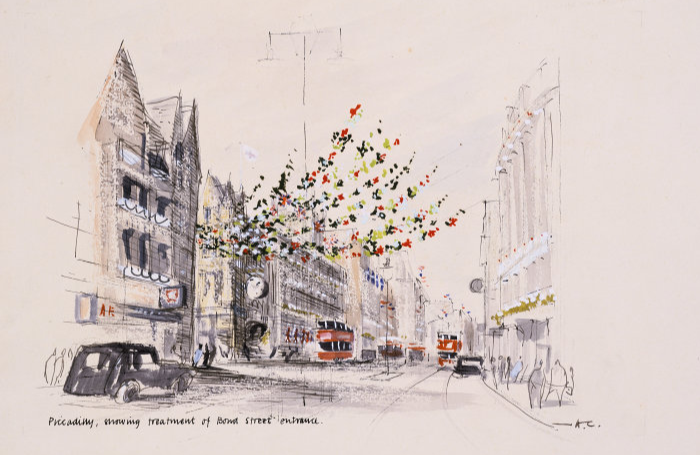
On the nearby Mall, the main approach to Buckingham Palace, four giant coronet arches made from tubular steel were erected (Image 4). In this 1953 film, Chief Architect to the Ministry of Works Eric Bedford, who oversaw the design of the arches, can be seen inspecting their fabrication.
On Hungerford Bridge, the railway bridge linking Charing Cross and Waterloo, the coronation decorations featured, of course, trains. Drawings show a banner unfurling at the northern end of the bridge with the words ‘God Bless the Queen’ emblazoned on a bright red locomotive (Image 5).
The centerpiece of the decorations was a huge coat of arms on Whitehall, the main thoroughfare between Trafalgar Square and Parliament (Image 6). It was designed by artists and designers Christopher and Robin Ironside. Casson wanted Whitehall, which counts the War Office among its buildings, to have “a military air”, so Horse Guards’ helmets and breastplates were added to the avenue’s lampposts (Image 7).
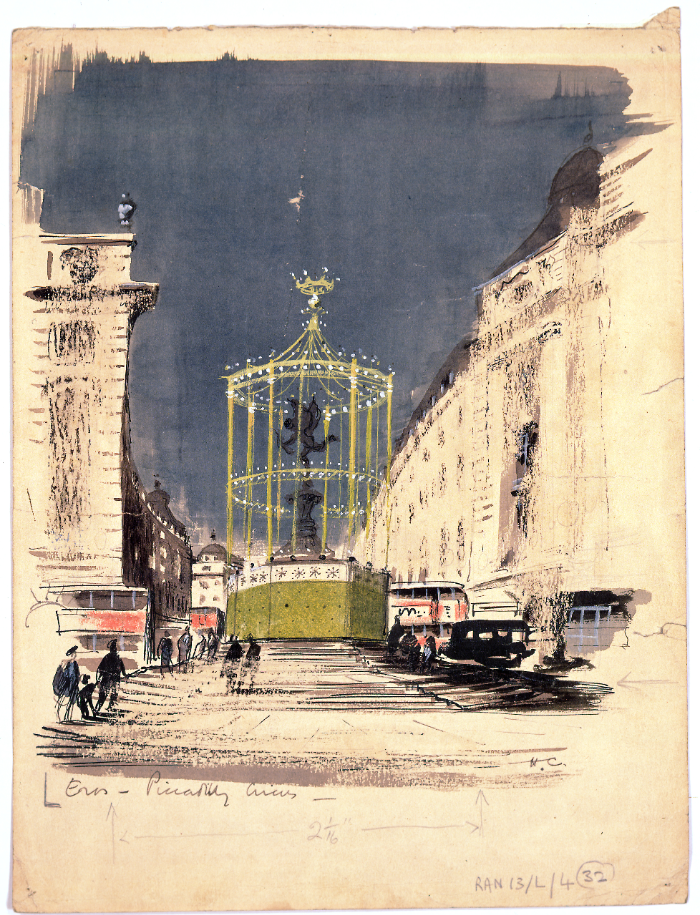
Although Casson was primarily responsible for the decorations in Westminster, similar schemes festooned town centers around the country. Another drawing by Casson shows decorations in an unidentified town square (Image 8 - please contact us if you recognise this location).
As well as decorations, the coronation required temporary structures in which to stage the event. The Ministry of Works’ Eric Bedford was tasked with designing an annex or ‘Baldacchino’ (a ceremonial canopy), at the entrance to Westminster Abbey, which was lined with heraldic sculpted animals representing “the Queen’s beasts” (Image 9).
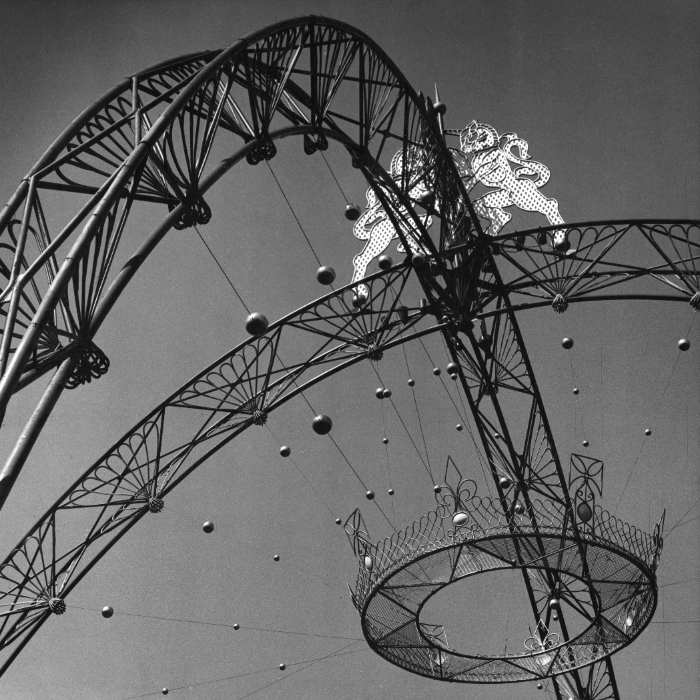
Despite the pomp and ceremony of Casson’s coronation decorations, it appears he would have liked some royal ceremonial traditions to move more with the times. Reflecting in a 1990 interview for the British Library’s National Life Stories oral histories series, he claimed that the rise of Disney, with its fantasy world of royal sumptuousness, had lessened the impact of real royal trappings such as the Gold State Coach, which is used for coronations and the state opening of Parliament.
“I like seeing a couple of motorbikes and a maroon Rolls Royce sweep out of Buckingham Palace”, he said. “I'd rather the Queen opened Parliament in a Rolls Royce, I think. It would look more splendid.”
Further reading (available in the RIBA Library unless marked*)
- Architect & Building News, ‘Coronation decorations for the mall, Broad Sanctuary and Trafalgar Square (26 February 1953)
- Architect & Building News, ‘Coronation decorations: proposals for Westminster, Kensington, City of London, Manchester, Birmingham, Exeter’ (15 January 1953)
- Architects’ Journal, ‘Coronation designs for Trafalgar Square and the Mall: stands for outside Buckingham Palace, Parliament Square and in front of Horse Guards Parade’ (28 May 1953)
- Builder, ‘A Preview of Coronation decorations in the West End of London’ (29 May 1953)
- Building Design, ‘Coronation Streets’ (18 May 2012)
- Hugh Casson, ‘Hugh Casson’s London (London: Dent, 1983)
- Hugh Casson, ‘Hugh Casson: Architect Etcetera’ exhibition catalogue (London: RIBA, 1986)
- James Laver, ‘The Place of Crowning: its history, arrangement, and preparation for the coronation of Her Majesty Queen Elizabeth II’ (London: John Mowlem & Co, 1953)
- Joe Manser, ‘Hugh Casson: A Biography’ (London: Penguin, 2000)
- RIBA, Casson and Conder scrapbook
- Timber Development Association, ‘The coronation: some suggestions for commemoration’ (London: Timber Development Association, 1952)
- TIME, ‘Coronation Sketches’ (January 5 1953)*
